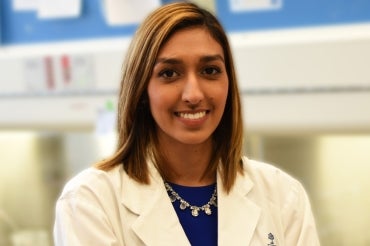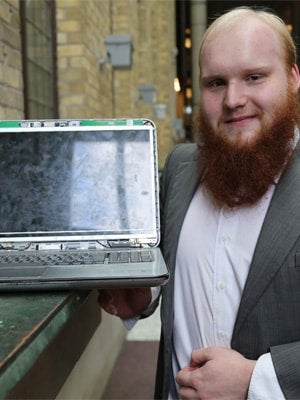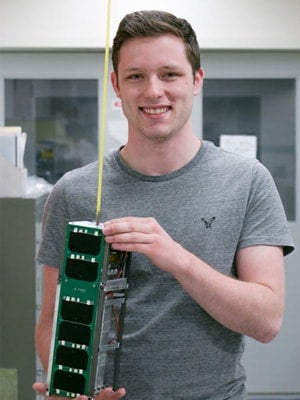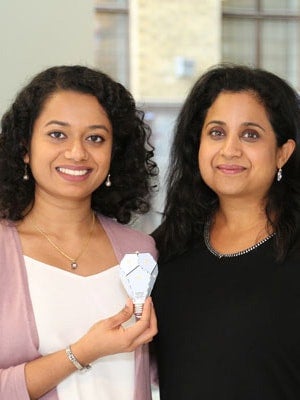#UofTGrad17: Engineering grads to watch

Published: June 13, 2017
From clean power researchers to satellite makers and biomedical innovators, graduates of U of T's Faculty of Applied Science & Engineering hope to take on some of the world's most pressing challenges.
More than 1,800 U of T engineering students graduated today. They're part of the more than 18,000 students from across the university's three campuses who make up the Class of 2017.
 William Graydon (left) researched traffic simulations in his undergraduate program. But next fall, he will begin his master's program at U of T, focusing on computer security.
William Graydon (left) researched traffic simulations in his undergraduate program. But next fall, he will begin his master's program at U of T, focusing on computer security.
“In the short term, I hope to go into the computer security industry to help prevent breaches of personal data,” he says. “In the long term, I hope to apply my engineering background to public policy to improve our legal and regulatory system to protect state secrets and to make our critical infrastructure more resilient against terror attacks.”
Serena Mandla (at top) is an established researcher, having published two papers – with two more underway – on work she did during her Professional Experience Year (PEY) internship at Harvard Medical School.
One of the projects involved the creation of an electrically conductive bioink for 3D printers, which can be used to make scaffolds for growing heart cells and tissues outside the body, and, in the future, lab-grown cardiac patches to repair hearts damaged by disease or injury.
Mandla will be pursuing a master's degree, studying under Professor Milica Radisic.
 Keenan Burnett (right) was a founding member of the Space Systems division of the University of Toronto Aerospace Team (UTAT) and designed key components of HERON, the team’s entry in the Canadian Satellite Design Challenge.
Keenan Burnett (right) was a founding member of the Space Systems division of the University of Toronto Aerospace Team (UTAT) and designed key components of HERON, the team’s entry in the Canadian Satellite Design Challenge.
Last summer, UTAT travelled to the Canadian Space Agency to test their device and its payload.
Burnett also completed an undergraduate thesis on attitude control in microsatellites and designed an autonomous robotic platform that can target objects based on light. The robot could be used in a number of applications, including warehouse monitoring, parking enforcement and security.
He is now working under Professor Tim Barfoot and Assistant Professor Angela Schoellig on a self-driving car project for his master’s.
 PhD student Pirathayini Srikantha (at left, with supervisor Professor Deepa Kundur) studied how electrical grids can better accommodate renewable sources like wind and solar, which generate power intermittently and sometimes unpredictably.
PhD student Pirathayini Srikantha (at left, with supervisor Professor Deepa Kundur) studied how electrical grids can better accommodate renewable sources like wind and solar, which generate power intermittently and sometimes unpredictably.
She also looked at how patterns in consumer power usage can be leveraged to make better use of “peak generation” sources, such as natural gas plants, which are only turned on when power demand is high.
Through the Institute for Sustainable Energy (ISE), Srikantha collaborated with engineers at Hatch, an engineering consultancy, to see how her solutions might be integrated into the existing power grid. She'll be joining Western University's faculty as an assistant professor in the department of electrical & computer engineering.
“U of T is a wonderfully diverse institute that provided me so many exciting opportunities to develop as a researcher and a teacher,” says Srikantha. “I have learned tremendously during my time here, and I consider myself extremely lucky to have been part of such a prestigious institution.”
Read more about these students and more Engineering grads



